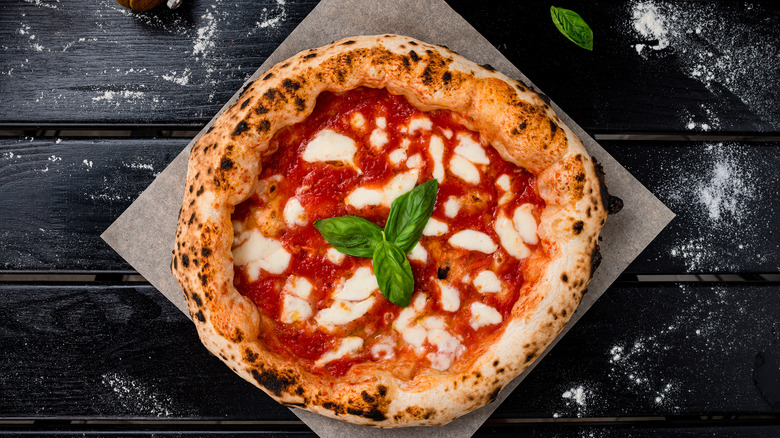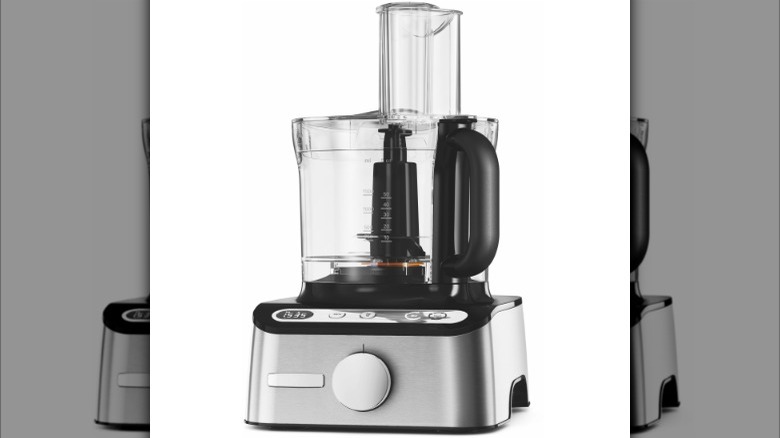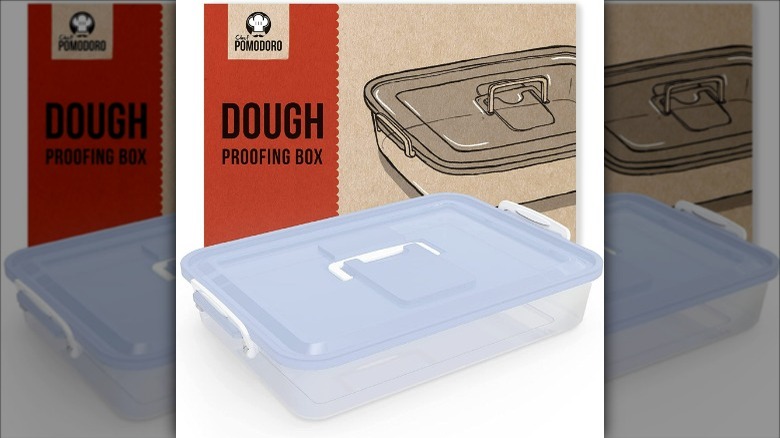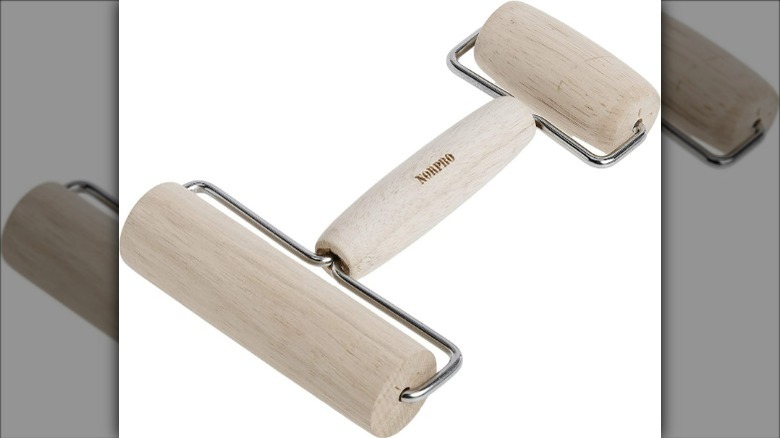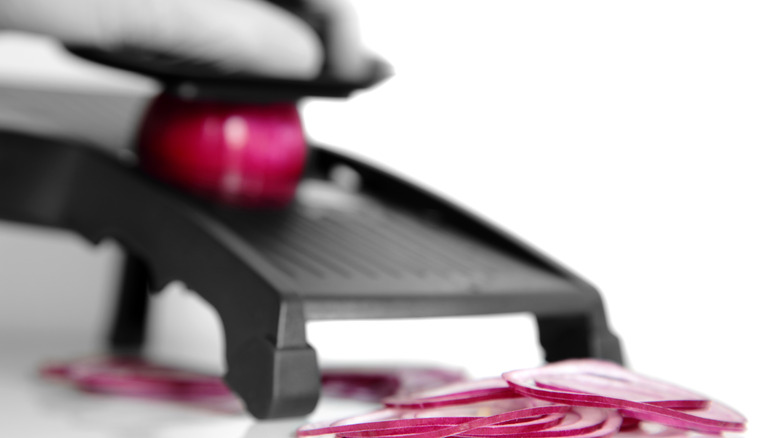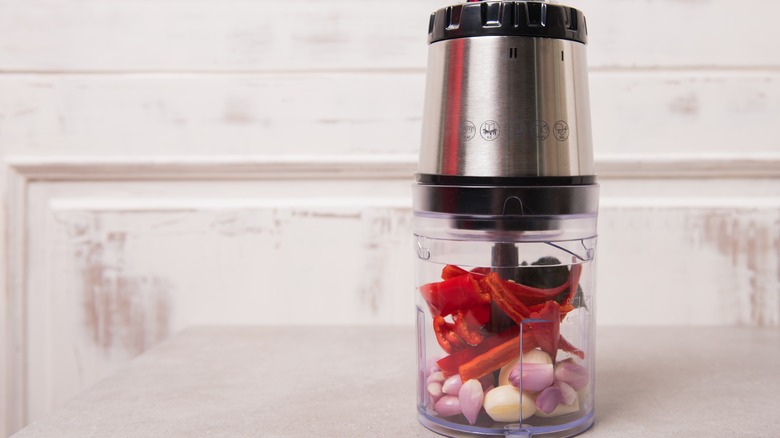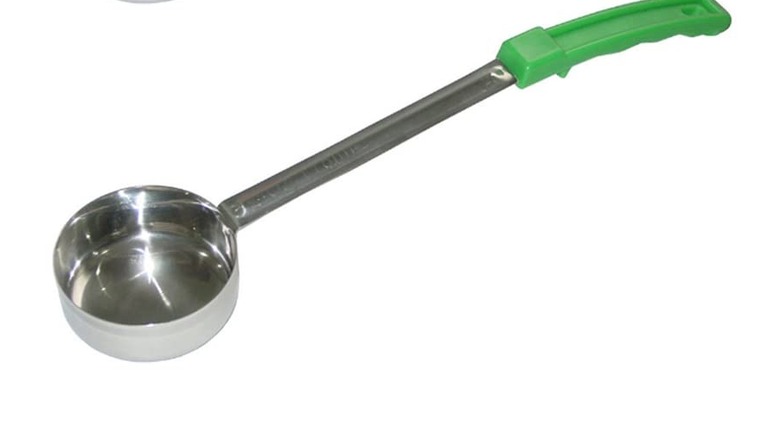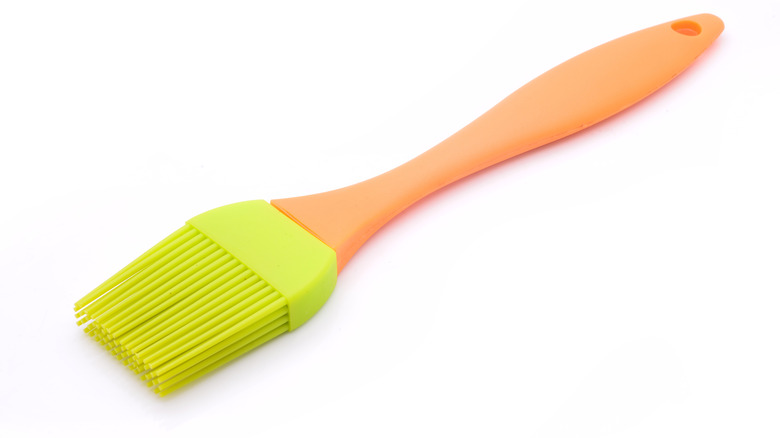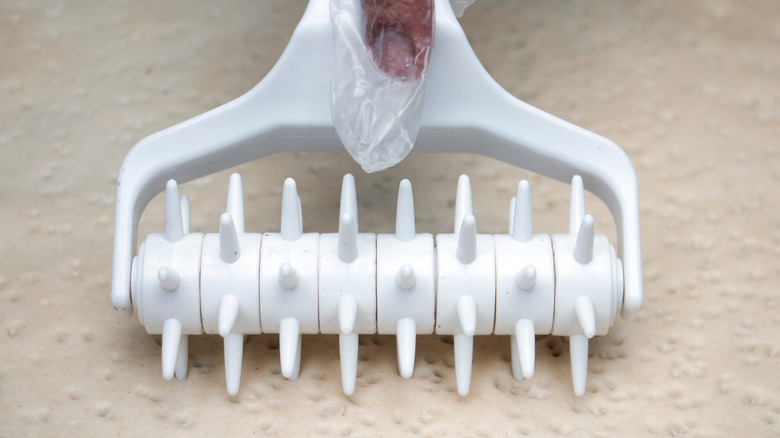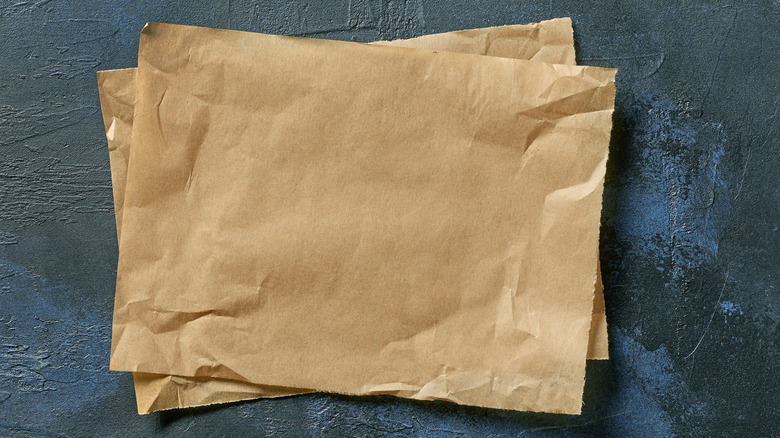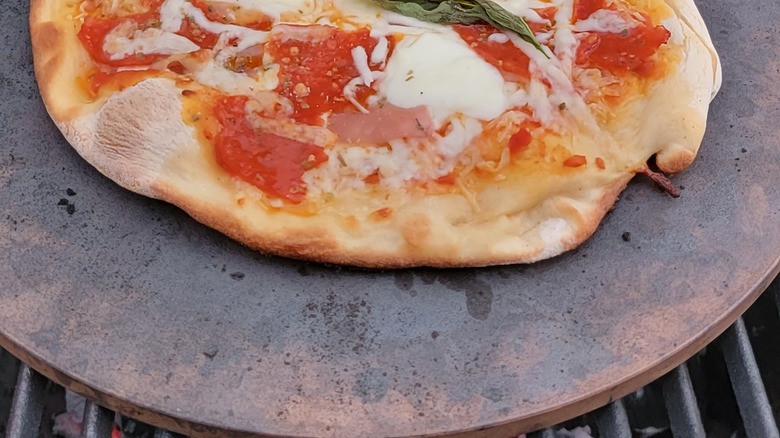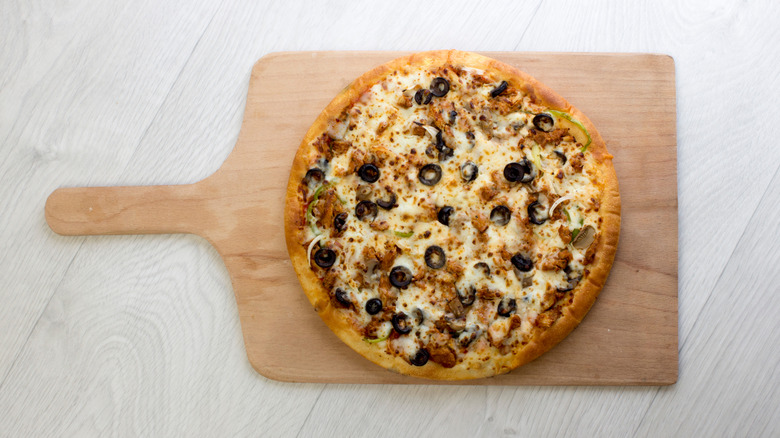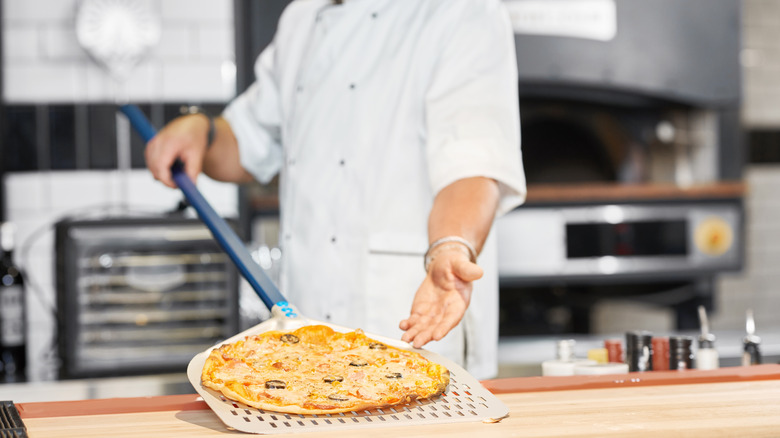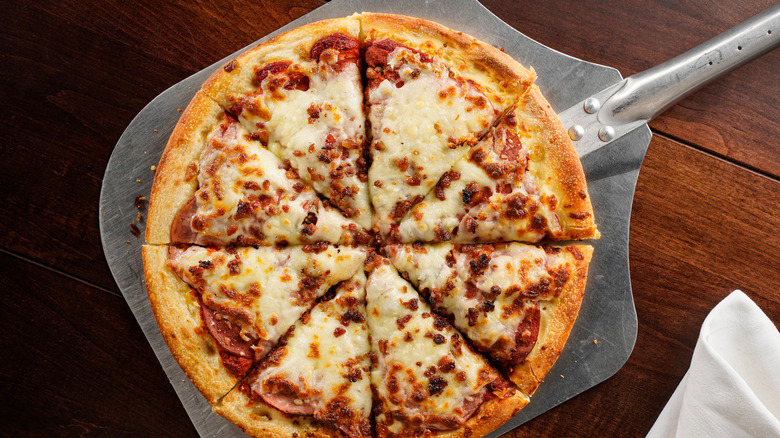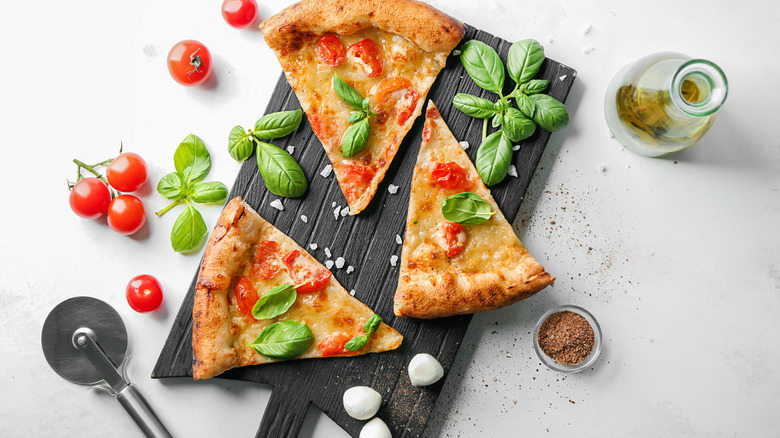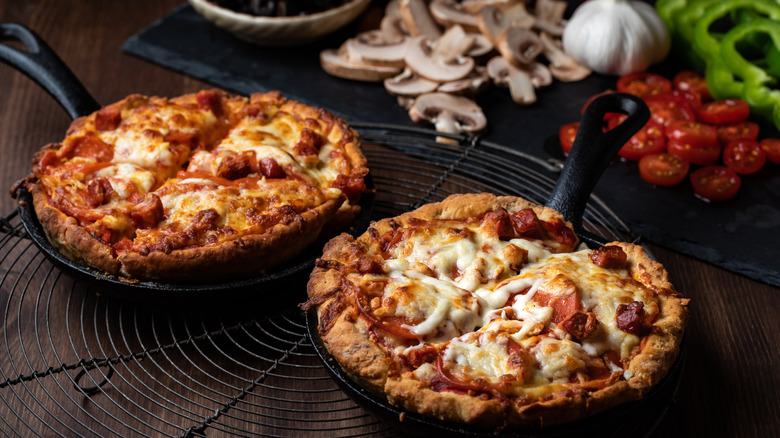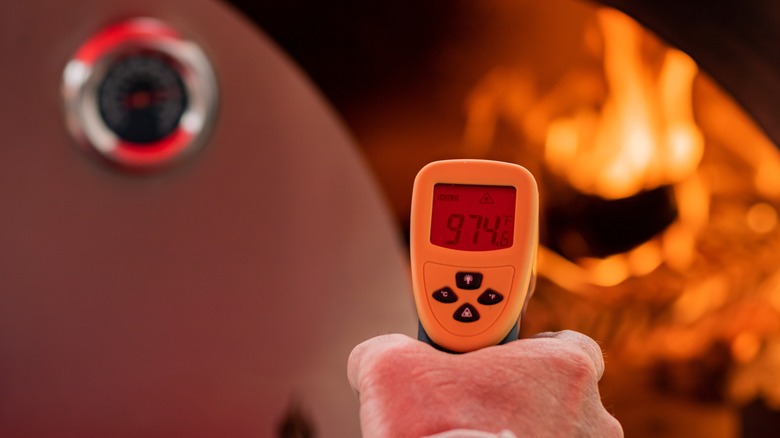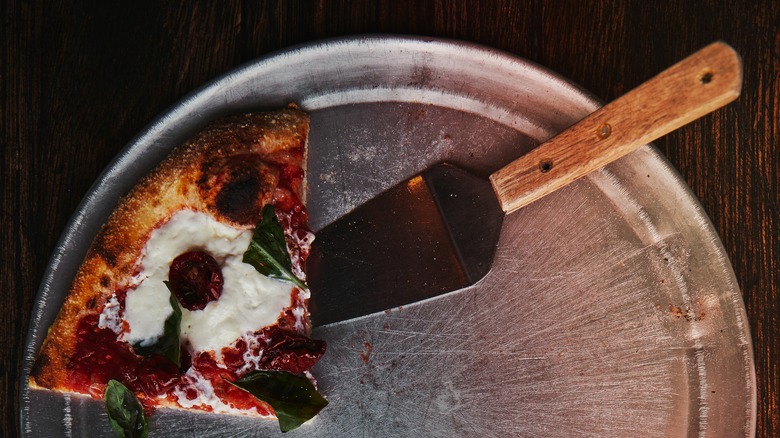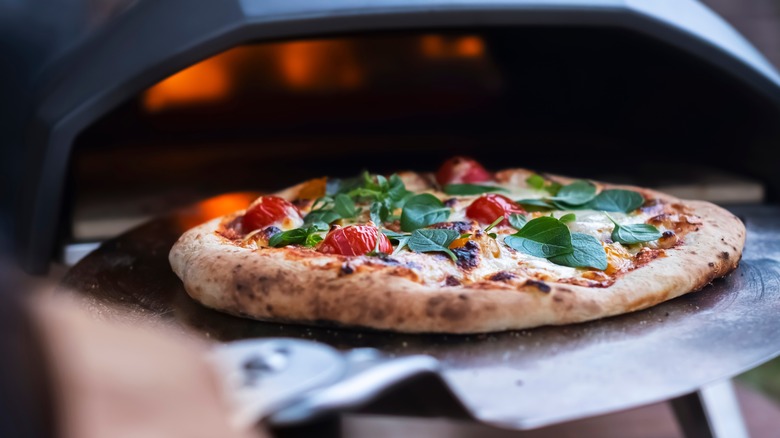20 Kitchen Tools That Will Help You Make The Perfect Pizza
Homemade pizza can be the star of a date night, family dinner, or everything in between. However, there always is the issue that your homemade pizza never tastes or has the same texture as the pies you get from the mom-and-pop Italian pizzeria down the street.
Not using the best quality ingredients or are having some fundamental flaws in your preparation methods — such as adding too many toppings or over-saucing your pie are among the biggest mistakes home cooks make with pizza. But more likely, it is that you are not properly equipped to make a perfectly crispy, thin, and flavorful pizza. We've done the legwork of finding the most essential pizza-making tools that anyone needs to craft the perfect pie. While many of these tools are priced at less than $20, others may require you to make a bit more of an investment in your pizza-making experience. But when you finally take a bite of your delicious homemade pie, we think that it will be more than worth the investment.
Food processor with a grating attachment
A food processor can play several different roles in the pizza-making process. Food processors, rather than stand mixers or the trusty hand-kneading process, create a more supple dough because the sturdy machine can whip the dough at a faster speed which develops the gluten quicker. The rapid kneading process also causes less air to be trapped in the dough, ensuring quality flavor. In other words, if you're looking for a kitchen appliance that makes perfect pizza dough in a snap, this is it.
You can also use your food processor to help grate the cheese for your pizza. Box graters may have been the traditional tool for this important step, but using a food processor with a grating attachment will not only save you a lot of time, it will also protect your fingers from the sharp blade.
Dough proofing box
Baking nerds know the importance of resting any yeasted dough. The proof, also called the "second rise," is critical to ensuring that the gluten in the dough slacks a little bit before the pizza is shaped. This is also an important stage in the flavor development process of the dough. It is critical for the baker to remember to cover the dough, since leaving it uncovered can cause a skin to form on the outside of the dough or cause it to dry out.
If you want to avoid the headache of tearing off a piece of pesky plastic wrap every time you prepare your dough, purchase a pizza dough proofing box. We recommend the 14x11-inch proofing box from Chef Pomodoro which has enough space for a few balls of dough as well as a transparent lid to ensure that your dough is kept under an airtight seal when you place it into your refrigerator.
Kitchen scale
Making pizza dough is above all, a science. To make perfect pizza dough at home, you'll need to invest in a kitchen scale. You should always bake with a scale because they are far more accurate than using cups and spoons for measurements.
Let's say that you're measuring a cup of flour for a recipe; if you scoop and put any pressure on the cup, it may mean you are under- or over- measuring the amount of flour you need. Though it may seem like a minor issue, when the marginal differences add up, you'll find that your recipe comes out differently than expected. Scales are helpful when you need to scale up your recipe as well, which makes this tool important when making homemade pizzas for a crowd.
Pizza roller
To ensure an even baking crust, you'll need to make sure your pizza dough is evenly rolled out. While you can stretch your pizza dough by hand (which includes tossing like a pizza pro), you can also make your life easier by purchasing a pizza roller. Most of these hand-held rollers are built of several different kinds of dough including pizza dough, pie dough, and pastry. The pizza roller is also lighter than a rolling pin — the latter of which you should never use to roll out pizza dough.
Rolling pins tend to push the gas out of the pizza dough, thus rendering the crust tough and stodgy. However, if you are aiming for a paper-thin crust that resembles more of a cracker than a pizza, use either the rolling pin or the pizza roller to get your crust as thin as you can without tearing.
Mandoline
Watery pizza toppings, such as zucchini, tomatoes, mushrooms, squash, apples, and pears, need to be shaved down super thin if you plan to add them to your pizza. Your mandoline is a kitchen tool that can help ensure these toppings are both equally-sized and paper-thin. If you leave whole chunks of watery toppings on your pizza, you will find soggy spots and a pizza that ends up caving in on itself.
A mandoline also opens up opportunities for tubers as toppings. Since tubers are very hard and take a long time to cook, you'll want to slice these veggies as thinly as possible to ensure they cook in the short time your pizza is in the oven. You can even make a unique pizza inspired by a baked potato with mandoline-sliced potatoes, a blend of cheeses, and chopped chives.
Cordless chopper
Pizza nights can be a busy time in your kitchen. You have to get the dough ready, rested, and formed ... not to mention all the other prep work like chopping your pizza toppings into small pieces. This is when a cordless chopper can come into play in your kitchen. These high-powered machines can chop pizza staples like onions, peppers, and garlic into tiny pieces in a matter of seconds. You can also use your cordless chopper to cut your bacon or ham into tiny pieces, which will save you a lot of time — especially if you have to prep a ton of toppings.
Does it matter that your toppings are in small pieces? The short answer is, yes. When you bite into your pizza, you want to get all of the flavors at once — meaning that you should evenly distribute a thin layer of your toppings across your pizza. If you're wondering about spacing, just imagine that you want to get every topping in each bite.
Bench scraper
Plenty of notable chefs are fans of the bench scrapper. On his Twitter account, Food Network star Michael Symon called the basic kitchen tool the "greatest" and that especially rings true when it's used for dealing with pizza dough. Bakers use the bench-scraper, which is equipped with a thin sheet of metal, to slice the dough into pieces, frost cakes, and even chop ingredients. We think it is essential for working with pizza dough because it allows you to slice the dough with ease, as well as move the dough from the proofing box to your peel.
You can also use the bench scraper to remove the tiny pieces of dough that get stuck to your countertop or wooden pizza peel. Take advantage of the edge to thrust the flour off of your countertop and into the trash before you apply any cleaning products to your countertop.
Spoodle
When it comes time to add tomato sauce to your pizza, wouldn't it be great to have a kitchen tool that both allowed you to scoop the sauce onto the center of the pizza and to spread it? Enter the spoodle!
The fun-to-say kitchen tool has both a deep spoon shape and a flat bottom that allows you to easily spread pizza sauce on the crust. Start by pouring your pizza sauce in the center of the dough and then use the backside of the spoodle to gently — meaning without applying pressure — swirl the sauce to the edge of the pizza. Be sure to maintain a few inches of sauceless space between the side of the crust because the sauce will expand a little as the pizza bakes. There also shouldn't be any bare spots or small mountains of sauce anywhere on the pizza. You should also avoid over-saucing your pizza, as this would create a soggy pie. Try just applying a very thin layer of sauce to start — you can always go back and add more if you think your pizza requires it.
Basting or pastry brush
Not all pizzas are made with tomato sauce. If you would like to use an olive oil crust for a white pizza, you need to have a pastry or a basting brush handy to spread the oil across the entirety of your crust. For a more flavorful pizza, you should consider a bit of garlic-infused olive oil to the crust after you've already put on your toppings. Once you've brushed the oil on the crust, you can sprinkle Italian seasonings or parmesan cheese too.
If you would rather not use a pastry brush, you could opt for a squeeze bottle for sprinkling oil on your pizza. However, this method isn't foolproof and can lead to parts of your crust being saturated with oil while leaving others dry. And since you can use your pastry brush for egg washes on pie crusts and covering treats with melted butter, there's no reason why you shouldn't have a pastry brush in your cooking arsenal.
Pizza docker
A pizza docker is a prehistoric-looking tool that is essential for home pizza cooks. It's primary use is to add small holes to the pizza crust before baking. These holes prevent the pizza dough from rising and cooking unevenly. Pizzas that have been rolled with a docker will have fewer crispy air bubbles and a flatter surface for toppings.
You can purchase a dishwasher-safe, plastic pizza docker from Amazon for less than $10. The more expensive metal or wood-handled dockers can make you look like more of a pizza pro but at a higher price premium. If you don't want to invest in a pizza docker altogether, simply use a fork or toothpick — you'll just spend more time pricking your pizza.
Parchment paper
Parchment paper is important for both cooking and baking. If you're making homemade pizza crust, you should use parchment to help slide your dough from your preparation space into the oven. This trick is especially important if you don't have a pizza peel. If you make the entire pizza on parchment, you can easily slide the pie onto a hot baking stone. Once the pizza is finished baking, the crust will loosen from the paper and make it easy for you to slide the pizza out.
This method has several major precautions and drawbacks. Most parchment paper can withstand temperatures from 420 F to 450 F. If you are working with oven temperatures higher than that, such as with an outdoor pizza oven, you can't use parchment. However, because the pizza bakes for a relatively short amount of time, if you are baking no higher than the recommended temperature, you shouldn't have to worry about your parchment becoming brittle and breaking.
Pizza stone
The number one tool you need for the perfect homemade pizza is a pizza stone. The ceramic disc is used to get an even heat distribution on the bottom of the crust. This kitchen tool will prevent thick crust from being too chewy because the bottom of the pizza will crisp up once it hits the hot stone.
To ensure optimal heat retention and the perfect bake, you should always preheat your oven with the pizza stone. Pizzacraft, which produces several different types of stones, recommends heating your oven to 500 F for at least half an hour to ensure the stone gets hot enough. You should also add a little bit of flour to the bottom of the pizza crust before cooking with your pizza stone to limit the opportunity for the dough to stick to the stone.
Wooden pizza peel
Pizza peels, which can come in a variety of shapes and sizes, are built for a specific purpose in the pizza-making process. Wooden pizza peels are made for forming and shaping your pizza as well as launching it into the oven. A short-handle wooden pizza peel is ideal for shaping and creating your pizza in a small space. Because the pizza peel is small and close to your body, you'll have more leverage in putting the pizza in the right spot in your oven.
After your pizza is done baking, you can transfer it back to the wooden peel for cutting. The thickness and quality of a sturdy wooden pizza peel is a statement piece in your kitchen, thus making it an aesthetic investment as well.
Long-handle pizza peel
A long-handle metal peel is difficult to maneuver because of its size, but it is an important tool for rotating and moving the pizza while it's in the oven. According to deep dish specialists Giordano's, you should purchase a long-handle pizza peel for rotating and cooking that allows you to be at least four inches from the oven to avoid burning your hands or forearms when rotating, retrieving, or moving the pizza. The website also notes that there is a learning curve in working with the unwieldy tool, so you should be prepared for your first couple of pies to feel somewhat wobbly compared to a short-handle peel.
The sheer size of the long-handle peel may not be practical for a home kitchen (unless you want to take out a ceiling light). If you're cooking in an outdoor pizza oven where space isn't a factor, a long-handle peel is the best way to keep your body away from the heat.
Short metal pizza peel
If you're retrieving your pizza from a standard kitchen oven, you should use a metal peel (also called a "blade") rather than a wooden one. Although metal tends to be stickier than wood (which is why you should use a wooden pizza peel for prepping and "shooting" the pizza into the oven), it's more heat-resistant and will not warp against the hot pizza stone or the surface of the oven.
The thinness of the metal peel makes the tool both lightweight and easy to slide underneath the cooked pizza without doing major damage to the crust. For those of you that plan on making homemade pies on a frequent basis, consider purchasing the full set of wooden and metal peels in order to ensure pizza perfection.
Pizza cutter
Once your pizza is out of the oven, it's time to enjoy it. But, you have to ensure you can slice your pizza first without shredding it. We recommend using a pizza cutter to get perfectly sharp edges on your slices. Consider purchasing different styles of cutters including wheels, pizza scissors, and rocking cutters.
You can use your pizza cutter for more than just pizza. If you like adding basil as a topping, use the pizza cutter to chop up leaves to garnish your pie. Beyond pizza, this tool will come in handy to get better precision when cutting pancakes, fudge, brownies, or homemade pasta.
Cast iron skillet or baking pans
Pizza is more than just thin-crust, Neapolitan-style pizza. You can use cast iron pans or standard metal baking pans to make Detroit-style pizza at home. The Chicago deep dish cousin is thicker than other pizza styles and is made in a rectangular pan, rather than a circle. The sauce for this pizza is also fully cooked and added to the pizza after it's finished baking.
If you plan on sticking to the standard baking pan for this recipe, you should add a generous oil coating before adding in your dough. This will keep your crust crispy and produce the dark, caramel-color dough that Detroit-style pizza is known for. Seasoned cast iron skillets are a good choice for thicker-crust pizza because the pan conducts and holds heat well.
Infared thermometer
Infrared thermometers are a good kitchen tool to have handy whether you make homemade pizza often or not. The device, which is also sold as a temperature gun or a laser thermometer, reads temperature from a distance. The thermometer will only measure the surface temperature of your pizza oven or stone — not the ambient temperature around it.
You should use a thermometer to check the temperature of your indoor or outdoor oven and your stone. This reading will indicate when your stone or oven is finished preheating and when it's time to slide your pizza into the oven. If you don't already own one, you can find high-quality infrared thermometers on Amazon for less than $20. At that price, it's definitely worth the investment.
Slice server
No one wants to burn their fingertips when they're grabbing a slice of pizza. You should always keep a triangular pizza server on hand to serve your pizza. The shovel-shaped pizza servers are thin enough to scoop from underneath the pizza and serve individual slices with ease. Use the edge of the tool to cut through pesky tomatoes or melty cheese. If you want to upgrade your pizza server, you can purchase one with an elegant wooden handle or stick to the plastic version for a budget-friendly kitchen tool. You can also use the serving utensil to serve pie slices or bread.
Most of the plastic-handle pizza servers can be placed in the dishwasher. If you have pesky cheese sticking to your pizza serve, you can soak the tool in warm water and add a bit of baking soda.
Outdoor pizza oven
Outdoor pizza ovens simply reach higher temperatures than standard kitchen ovens will, which makes the outdoor pizza oven an ideal tool for cooking pizzeria-style pies. This means that your pizza will be done in only a few minutes — blistered Neapolitan crust and all.
These outdoor ovens aren't as expensive as you may think; the gas-powered Ooni Koda 12 is priced at $399.99 at the time of publication and is one of the most user-friendly pizza ovens we've ever used. It's portable and weighs less than 30 pounds, meaning that you won't have to commit a lot of space for the perfect pizza. You can use your pizza oven for baking bread, cooking meat, or making dessert, too. If you are a big entertainer or just a homemade pizza lover, this is one tool that will pay for itself.
